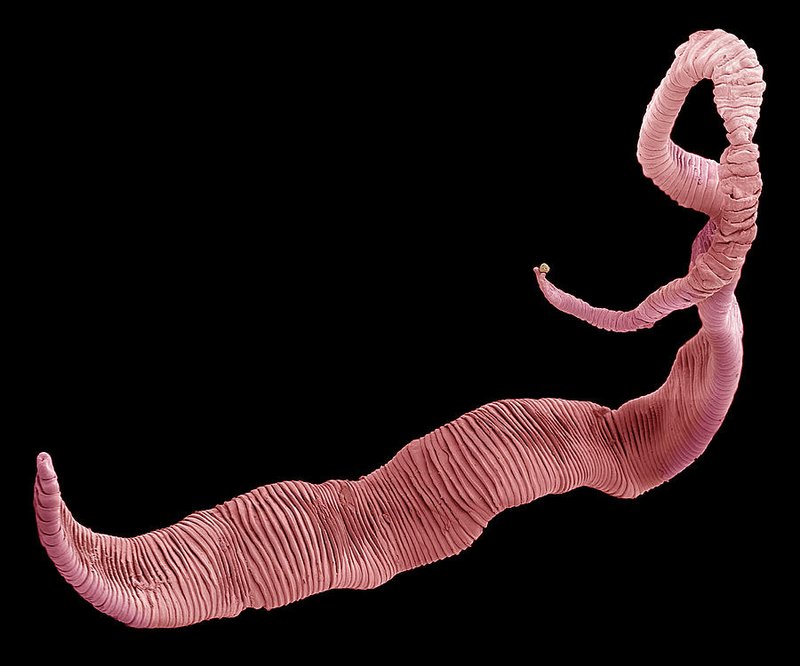
The monitoring of tapeworm activity isn’t just a scientific curiosity; it’s crucial for pet owners, farmers, and health professionals alike. Think of it as keeping an eye on the health of your loved ones or livestock. Just as you would monitor the temperature or humidity to keep your home comfy, understanding tapeworm cycles can help you keep those you care about safer and healthier.
What Are Tapeworms and Why Monitor Them?
Tapeworms are flat, parasitic worms that live in the intestines of their hosts. They can grow quite large, some reaching several feet in length! They attach themselves to the intestinal wall using hook-like structures on their heads and feed on the nutrients in the host’s food. Monitoring their activity is essential because, while some infections might be asymptomatic, others can lead to serious health issues.
But you might be wondering, “What’s the big deal about tracking tapeworms?” Well, the truth is that their populations can fluctuate with the seasons, affected by factors like temperature, humidity, and the availability of hosts. For instance, during warmer months, you might notice an increase in tapeworm cases in pets, as they’re more likely to encounter infected fleas. Monitoring these changes can help in taking preventive measures, ensuring that your furry friends stay healthy.
Seasonal Activity Patterns of Tapeworms
Tapeworms tend to have distinct activity patterns based on seasonal changes. Knowing how these patterns work can help you anticipate potential outbreaks and take necessary precautions.
Spring: A Time of Awakening
Spring is like a fresh start for tapeworms. As the weather warms up, their activity begins to pick up. The increase in temperature and higher humidity create a perfect environment for their eggs to thrive. Fleas, which are carriers for some tapeworm types, also become more active in the spring, raising the risk for pets.
If you’re a pet owner, this is the time to be vigilant. You might want to check for signs of tapeworms in your pets, especially if they’ve been scratching more than usual. Using preventive treatments for fleas can help curb the chances of infestation before they escalate.
Summer: Peak Activity
Summer is usually when tapeworms are at their most active. With warm temperatures and plenty of food sources for rodents and fleas, the conditions are ripe for spreading these parasites. You might notice more cases in pets and livestock during this time, as they come into contact with infected fleas or ingest contaminated food.
During summer, it’s important to maintain regular deworming treatments for pets and check their environment for any possible risks. Ensuring cleanliness and good hygiene can make a significant difference in keeping tapeworm populations in check.
Autumn: Gradual Decline
As the weather begins to cool in autumn, tapeworm activity typically starts to decline. The decrease in temperatures and humidity means fewer fleas and hosts around, which can lead to a natural drop in tapeworm cases. However, this doesn’t mean you should let your guard down completely.
You might want to continue monitoring your pets, especially if they exhibit any unusual symptoms. It’s also a good time to review your pet’s health protocols and consult with a veterinarian about any needed vaccinations or treatments before winter hits.
Winter: A Respite
In winter, most tapeworms enter a kind of slumber. Colder temperatures slow down their lifecycle, and the risks of transfers between hosts diminish. However, certain species of tapeworms can still survive in cooler climates, so it’s essential to stay informed.
For those living in colder regions, monitoring tapeworm activity is crucial, as some rodents may carry these parasites through the winter and could pose a risk to pets and livestock once the weather warms again. It’s wise to engage in preventive measures even during the off-season.
How to Monitor Tapeworm Activity
Keeping an eye on tapeworm activity can feel overwhelming, but breaking it down into manageable steps can make it much easier.
Regular Veterinary Check-Ups
One of the best ways to stay on top of tapeworm activity is to schedule regular check-ups with your veterinarian. They can conduct fecal exams to detect any tapeworms early. Early intervention can save you and your pet a lot of trouble down the road.
Maintain Hygiene Practices
Keeping your living space clean helps minimize the risk of an infestation. Here are a few tips:
- Regularly clean your pet’s bedding.
- Maintain a tidy yard, removing any potential food sources for rodents.
- Practice good hygiene with food storage, especially for grains and pet food.
These steps can help reduce the chances of tapeworms entering your home.
Know the Signs of Infestation
Being aware of the signs can help you catch any potential cases early. Watch for symptoms like:
- Unusual appetite changes in pets.
- Weight loss despite eating well.
- Visible segments of tapeworms in feces.
- Intestinal discomfort or irritation.
If you notice any of these issues, contact your vet promptly.
Monitoring tapeworm activity across the seasons can be straightforward if you understand their patterns and take the right precautions. Just like any good health strategy, it requires a little attention and effort, but it’s well worth it. By staying informed and proactive, you can help keep your pets and loved ones safe from these unwelcome guests.
So, the next time the seasons change, remember to adjust your monitoring practices accordingly. After all, keeping track of tapeworm activity is just another part of being a responsible pet owner or caretaker, ensuring that everyone stays healthy and happy.

